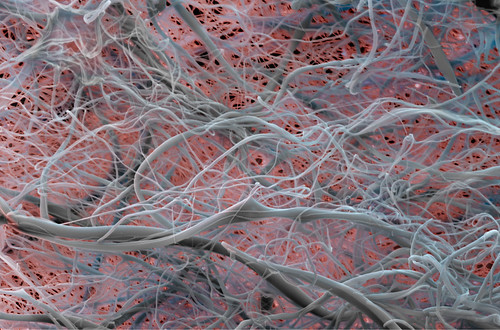Team:Groningen/Silk/BiomedicalProperties
From 2013.igem.org
| Line 1: | Line 1: | ||
<html> | <html> | ||
| + | <h1>Biomedical properties</h1> | ||
| + | |||
| + | <p> | ||
<div align="center"> <!--you can use left/right or center to align the image--> | <div align="center"> <!--you can use left/right or center to align the image--> | ||
<table id="layout" width=50%> <!--change the percentage to determine the size of your image--> | <table id="layout" width=50%> <!--change the percentage to determine the size of your image--> | ||
| Line 9: | Line 12: | ||
</table> | </table> | ||
</div> | </div> | ||
| + | </p> | ||
| - | |||
<p> | <p> | ||
Normal cells need a scaffold to adhere to. If there is a wound the tissue is repaired very slowly, and only after that the cells from the wound are able to completely recover. When a wound is covered with a good biomedical material, the cells will start to spread, proliferate and differentiate more quickly. On an unsuitable material, the interaction can lead to immune responses and cell death. | Normal cells need a scaffold to adhere to. If there is a wound the tissue is repaired very slowly, and only after that the cells from the wound are able to completely recover. When a wound is covered with a good biomedical material, the cells will start to spread, proliferate and differentiate more quickly. On an unsuitable material, the interaction can lead to immune responses and cell death. | ||
Revision as of 05:04, 3 October 2013
Biomedical properties
Normal cells need a scaffold to adhere to. If there is a wound the tissue is repaired very slowly, and only after that the cells from the wound are able to completely recover. When a wound is covered with a good biomedical material, the cells will start to spread, proliferate and differentiate more quickly. On an unsuitable material, the interaction can lead to immune responses and cell death.
Spider silk is suitable as biomedical material because:
- It has no toxicity[1][2][3]. Short-term and long-term test with various cell lines have given no indication of toxicity.
- No/low immune response[5][6][7]. Different types of cells were examined for immunological response to silk. One study compared collagen, which is used as biomaterial for coating, to silk. The results favoured silk, and deemed silk as being biocompatible[5].
- No inflammation. The body will not detect the silk as a foreign material, as it consists of a smooth protein layer.
- Cell adherence. This depends on the processing of the silk. With small modifications (for instance, genetic addition of an RGD motif) cell adhesion can be improved, to stimulate tissue recovery of a wound. However, for the use of implants, cell adhesion is undesired, as fibrosis can occur.
- Biodegradable. Spider silk has a slow biodegradability, which is useful for medical applications.
- Elasticity and mechanical properties. The spider silk material is strong and stable material. The elasticity of a biomedical material has shown to influence cell growth and proliferation, and therefore the flexible and adjustable spider silk is very potent.
- Does not swell. Due to the nature of the protein it is both hydrophilic and hydrophobic, the latter preventing any major uptake of water.
- No bacterial or fungal degradation[5]; this is credited to the long evolution. One can imagine that if the base of a spiders nature, its web, would be easily torn apart by the hundreds of bacteria and fungi around, then they would not have gotten this far. The silk typically has a very flat surface that does not allow cells to grow on it very easily, nor be identified by antibodies.
Studies performed with coated implants in mice and pigs support these medical properties. Also spider silk coated breast implants are tested in preclinical trials, and have so far shown promising results (AMsilk).
Spider silk is our choice to approach the problems of medical implants. However, so far no large scale production of spider silk is achieved, and production, purification and processing are challenging. Why is the production of the spider silk protein so difficult? How can we make a coating from the spider silk?
 "
"
